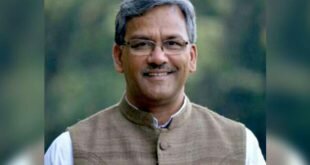The First Muslim President of India | Zakir Husain Biography
Zakir Husain – India’s 3rd President was the first Muslim President of India. He was the shortest serving President and also India’s first President who died in his office. In this small article we will take a quick look into his life and find out some interesting details about him. However, before we start, let us take a quick look into his life in a tabular format.
Zakir Husain at a Glance
| Born in | 1897, February 8 |
| Born at | Kaimganj, Farrukhabad in a family that was from Hyderabad (currently in Telangana) |
| Died in | 1969, May 3 |
| Died at | New Delhi |
| Political Affiliation | None |
| Religion | Islam |
| Vice President | May 13, 1962 to May 12, 1967 |
| President Rank | 3rd President of Free India |
| Important Points | India’s first Muslim President |
| India’s first President to die in office | |
| India’s shortest serving President | |
| Period of Presidential Position | May 13, 1967 to May 3, 1969 |
| Succeeded by | Varahagiri Venkata Giri (as acting President) |
| Governor of Bihar | July 6, 1957 to May 11, 1962 |
| Awards / Accolades | Padma Vibhushan in year 1954 and Bharat Ratna in year 1963 |
Childhood and Early Life of Zakir Husain
Zakir Husain was born to Naznin Begum and Fida Husain Khan in Kaimganj. The family originally lived in Hyderabad but moved to Kaimganj later. Zakir Husain was the 3rd son of the couple, who together had 7 sons in total.
His father died when he was only 10 years old. 3 years later when he was 13 years old, his mother died too. Only the 7 brothers were left but orphaned. Islamia High School is from where Zakir Husain received his early education and later completed his graduation from Anglo Muhammadan Oriental College. This college later became popular as Aligarh Muslim University.
His interest into politics was shaped during his college years. There he became a student leader. He graduated in year 1918 and after completing BA, he decided to go for MA. However, by that time, Mahatma Gandhi spearheaded the Non-Cooperation Movement and the Khilafat Movement. Because of the inspiration he received from Gandhi, he decided to drop out of MA because Gandhi had called to Indians to leave colleges that were administered by British Government.
Major Steps Towards Career
In 1920 the National Muslim University was founded under Zakir Husain’s leadership. In 1925 the university was moved to Karol Bagh and finally it was shifted to New Delhi’s Jamia Nagar. After this final move, the university was renamed as JamiaMilia University. He stayed as a teacher in that university from 1920 to 1922. However, he himself wanted to get higher education and hence moved to Germany. From there, he acquired Ph.D. in Economics from Frederick William University in year 1926.
Once he returned to India, he realized that education was equally important as the political movements led by leaders to free India from the clutches of British Rule. In 1927 he was appointed as JamiaMilia University’s head and after 22 years of hard work, he managed to revive the university, which was at the brink of closure because of financial problems and mismanagement. The university, under his leadership, contributed a lot towards India’s struggle for freedom.
Taking charge of the JamiaMilia University, he started popularizing the thoughts of Mahatma Gandhi as well as that of Hakim Ajmal Khan. He started experimenting with education system and started pushing it towards value-based education. Very soon, he became India’s one of the most celebrated educational thinkers. He strongly believed that politics alone would not help India achieve renaissance. He believed that education was equally important.
He introduced several educational reforms in India which started changing the very face of India. His dedication to the cause of spreading education also earned him appreciation of Muhammad Ali Jinnah – one of his arch political rivals.
In 1937 after Congress formed an interim government after winning with majority, he participated in National Educational Conference where he, along with Gandhi, supported the need for education that is work-centred and not book-centred. In October that year, he was appointed Education Committee’s chairman. He was tasked with the job of formulating basic education scheme for India.
Becoming India’s President
After India earned her independence, Zakir Husain was appointed as Aligarh Muslim University’s Vice Chancellor in 1948. In 1956 he was appointed in Rajya Sabha. However, only a year later, he was moved to Bihar as Governor. He served as Bihar’s Governor for the period 1957 to 1962. In 1962 he was appointed as Vice President of India. He stayed as Vice President for 5 years straight and then he was elected as India’s President. He was the first Muslim to have taken that position. He was a down to earth President who held a great sense of humanity. He was gentle and kind and interacted with all types of people irrespective of their social, economic and political status. He died in 1969 while in office, becoming the first Indian President to have died in office. His body was buried in JamiaMiliaIslamia’s campus right next to his wife.
Other Articles

